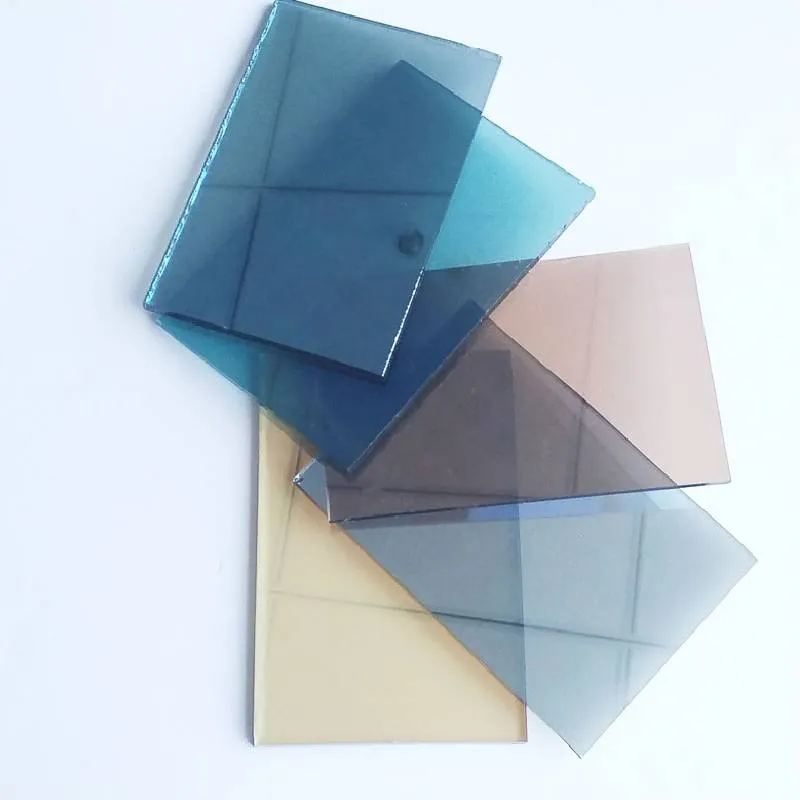The Cost of Low Iron Glass An Overview
In today’s architectural and design landscape, low iron glass has emerged as a popular choice for both residential and commercial projects. Renowned for its clarity and aesthetic appeal, this type of glass is fundamentally different from traditional glass due to a reduced iron content. The primary advantage of low iron glass is its enhanced transparency, allowing for greater light transmission and a more unobstructed view. However, understanding the cost implications associated with low iron glass is essential for any stakeholder in construction, architecture, or design.
Understanding Low Iron Glass
Low iron glass, often referred to as ultra-clear glass, is achieved by reducing the iron oxide content during the glass manufacturing process. Whereas normal float glass contains higher levels of iron, which can give it a greenish tint, low iron glass maintains a crystal-clear appearance that is favored in modern design. Its aesthetic qualities make it ideal for applications such as facades, skylights, and glass railings, where visibility and light transmission are paramount.
Factors Influencing Cost
The cost of low iron glass can vary widely based on several factors
1. Raw Materials The primary components in the production of low iron glass are silica sand, soda ash, and limestone. The purity of these raw materials impacts the final product's clarity and strength. High-quality raw materials can drive up production costs, consequently affecting the price of the end product.
2. Manufacturing Process The production of low iron glass requires advanced technology and specialized equipment. The manufacturing process is more complex than that of standard glass due to the precise control needed to ensure low iron content. This complexity often results in higher manufacturing costs.
3. Thickness and Size Low iron glass is available in various thicknesses and sizes. Custom dimensions or thicker glass will not only increase material costs but also lead to greater transportation and handling fees. Architects and designers must carefully consider these variables when budgeting for low iron glass.
cost of low iron glass
4. Finishing Options Additional processes, such as tempering, laminating, or coating, can further increase the cost. These finishing options enhance the glass's strength, safety, and functionality but require additional investments in processing and materials.
5. Supplier and Market Demand Just like any commodity, the price of low iron glass is influenced by market demand and the supplier's pricing strategy. In regions where low iron glass is in high demand or where few suppliers operate, prices can be significantly elevated.
Cost Comparison with Standard Glass
When compared to standard glass, low iron glass typically comes at a premium price. A rough estimate suggests that low iron glass can cost between 20% to 50% more than standard float glass, depending on the specific project requirements and local market conditions. However, many industry professionals argue that the benefits of low iron glass justify the higher cost. Its superior visual quality often leads to increased property value, improved energy efficiency through better light transmission, and enhanced design flexibility.
Economic Benefits
Investing in low iron glass can yield long-term economic benefits, particularly in energy savings and maintenance. Because low iron glass allows more natural light to enter a building, it can reduce reliance on artificial lighting, leading to lower energy bills. Additionally, its durability and resistance to environmental factors can minimize the need for frequent replacements or repairs.
Conclusion
In conclusion, while the cost of low iron glass is higher than that of standard glass, the advantages it offers in terms of aesthetics, energy efficiency, and overall performance can make it a worthwhile investment. As the demand for high-quality, sustainable building materials continues to grow, understanding the cost implications and benefits of low iron glass will be crucial for architects, designers, and builders. By factoring in these considerations, stakeholders can make informed decisions that align with their project goals and budget constraints.
 Afrikaans
Afrikaans  Albanian
Albanian  Amharic
Amharic  Arabic
Arabic  Armenian
Armenian  Azerbaijani
Azerbaijani  Basque
Basque  Belarusian
Belarusian  Bengali
Bengali  Bosnian
Bosnian  Bulgarian
Bulgarian  Catalan
Catalan  Cebuano
Cebuano  Corsican
Corsican  Croatian
Croatian  Czech
Czech  Danish
Danish  Dutch
Dutch  English
English  Esperanto
Esperanto  Estonian
Estonian  Finnish
Finnish  French
French  Frisian
Frisian  Galician
Galician  Georgian
Georgian  German
German  Greek
Greek  Gujarati
Gujarati  Haitian Creole
Haitian Creole  hausa
hausa  hawaiian
hawaiian  Hebrew
Hebrew  Hindi
Hindi  Miao
Miao  Hungarian
Hungarian  Icelandic
Icelandic  igbo
igbo  Indonesian
Indonesian  irish
irish  Italian
Italian  Japanese
Japanese  Javanese
Javanese  Kannada
Kannada  kazakh
kazakh  Khmer
Khmer  Rwandese
Rwandese  Korean
Korean  Kurdish
Kurdish  Kyrgyz
Kyrgyz  Lao
Lao  Latin
Latin  Latvian
Latvian  Lithuanian
Lithuanian  Luxembourgish
Luxembourgish  Macedonian
Macedonian  Malgashi
Malgashi  Malay
Malay  Malayalam
Malayalam  Maltese
Maltese  Maori
Maori  Marathi
Marathi  Mongolian
Mongolian  Myanmar
Myanmar  Nepali
Nepali  Norwegian
Norwegian  Norwegian
Norwegian  Occitan
Occitan  Pashto
Pashto  Persian
Persian  Polish
Polish  Portuguese
Portuguese  Punjabi
Punjabi  Romanian
Romanian  Russian
Russian  Samoan
Samoan  Scottish Gaelic
Scottish Gaelic  Serbian
Serbian  Sesotho
Sesotho  Shona
Shona  Sindhi
Sindhi  Sinhala
Sinhala  Slovak
Slovak  Slovenian
Slovenian  Somali
Somali  Spanish
Spanish  Sundanese
Sundanese  Swahili
Swahili  Swedish
Swedish  Tagalog
Tagalog  Tajik
Tajik  Tamil
Tamil  Tatar
Tatar  Telugu
Telugu  Thai
Thai  Turkish
Turkish  Turkmen
Turkmen  Ukrainian
Ukrainian  Urdu
Urdu  Uighur
Uighur  Uzbek
Uzbek  Vietnamese
Vietnamese  Welsh
Welsh  Bantu
Bantu  Yiddish
Yiddish  Yoruba
Yoruba  Zulu
Zulu 

